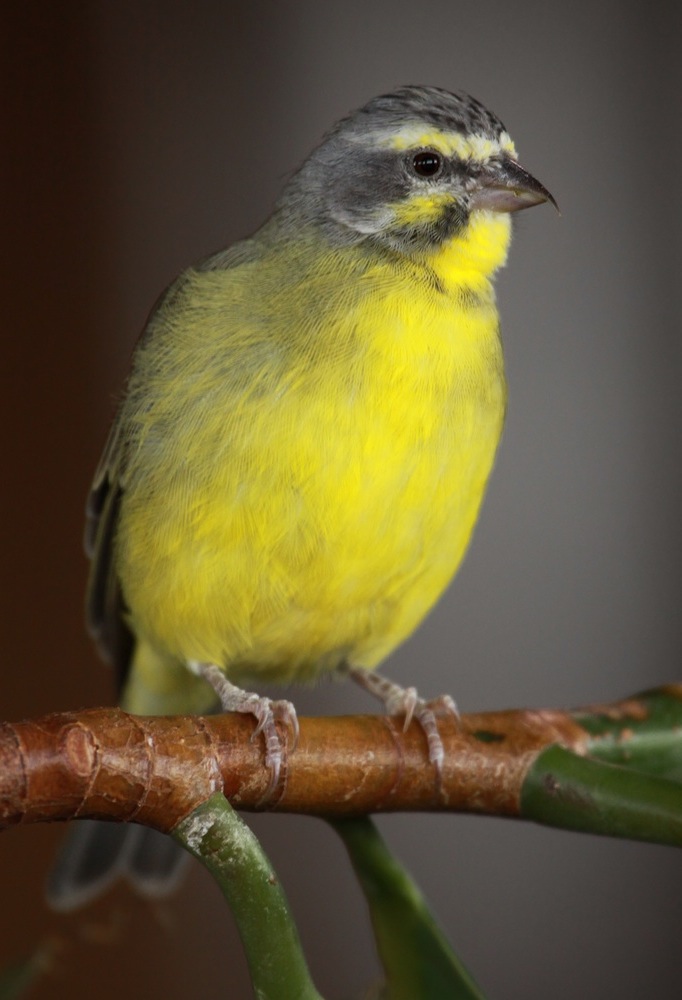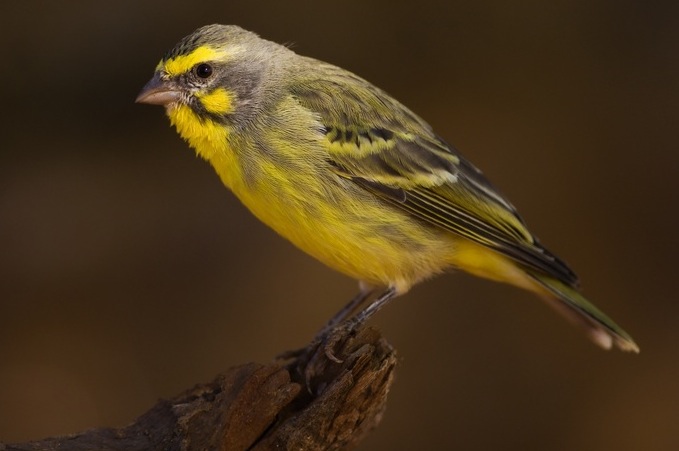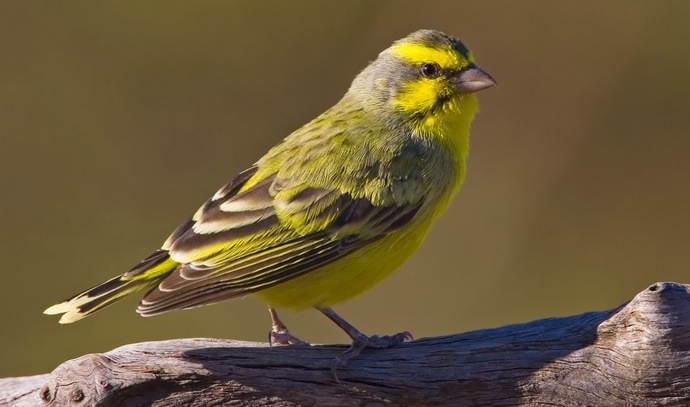Green singing finch (Yellow-fronted canary) - Serinus mozambicus

Origins: Widely-distributed across Africa south of the Sahara.
Length: 13cm (5in).
Appearance: Greenish-yellow underparts, being browner on the back and wings, with yellow markings on the head. Hens are less brightly-coloured than cocks, with a necklace of dark spots across the throat.
Similar species: The grey singing finch (S. leucopygius), which is duller and greyer in colouration.
Noise rating: Not likely to cause any offence. As a relative of the canary, cock green singing finches actually have an attractive melodic song.
Destructive capabilities: Will not cause damage in the aviary, aside from perhaps nibbling on some plants.
Suitability: Ideal for a mixed collection, in the company of other finches or even small non-aggressive softbills such as white-eyes (Zosterops).
Care: A typical canary seed diet will suit these finches well, with a seed mix which includes plain canary seed, red rape, hemp and niger. They should also be offered greenstuff such as chickweed and shepherd’s purse, and must be given an egg food throughout the breeding period, to provide a higher level of protein for the chicks.This may be advantageous at other times as well, during the moult for example.

Green singing finches need careful acclimatisation, as with other small finches, and they should not be allowed in an outdoor aviary until the danger of frost has passed in temperate areas. Heated accommodation over the winter is also likely to be required, and extra lighting, to prolong the feeding period on dark winter days will also be beneficial.
Breeding: Providing a choice of nesting sites, such as canary nest pans lined with felt or plywood nesting platforms, will give the greatest likelihood of success. Place the nest sites around the aviary under cover, so that the nest itself will not become saturated when it rains. Some pairs may even prefer to construct their own nest in a suitable bush. Breeding these finches in box-type cages is also possible, but results may be less satisfactory in such surroundings.
If you are keeping them indoors in warm, well-lit surroundings over the winter, it may be worthwhile providing them with nesting facilities, because they tend to breed between November and January in the wild. If this does prove successful though, a pair may nest later in the year in an outdoor aviary, as their reproductive cycle will adapt to breeding during the warmer months in the northern hemisphere. The song of the cock bird will be heard more frequently, and the hen will start searching diligently for nesting material as the pair come into breeding condition.

Breeding data: Four eggs. Incubation lasts 13 days. Young fledge about three weeks later.
Hybridisation: These finches have been known to hybridise successfully with domestic canaries, so it may be better not to mix them together. In spite of their alternative name of yellow-fronted canary, green singers played no part in the domestication of the canary.
* To find out more about the domestication of the canary, click here.